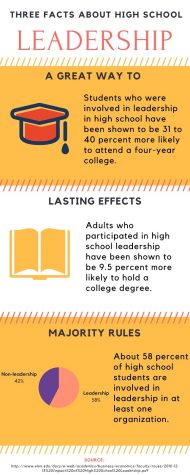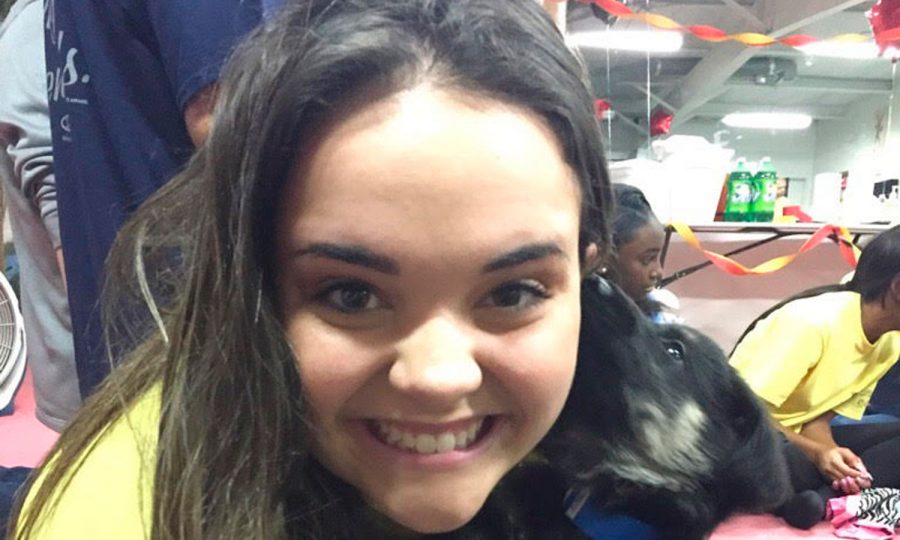Senior Abby Lodrigues sits on the floor at Staley’s Dog House. Her friends sit in a circle with her, each one enraptured with their own three-day-old puppy. She smiles and brushes her puppy’s fur lightly as it rolls over. They gathered partly for the dogs and partly because they, the leadership team of the Silver Spurs, have an opportunity to volunteer their team to take care of the puppies.
“We were responsible for making sure that they started their training right, which is one of the biggest things,” Lodrigues said. “It was really cool that they trusted the Silver Spurs and the leaders that much with all of that.”
High school leadership has given Lodrigues and countless other students nation and world wide a large array of unique experiences like this. Leadership gives students the chance to lead and cooperate with a variety of people.
Students may enter leadership to make their college applications look better or to help develop their leadership abilities. Others, like Lodrigues, simply want to become a bigger part of their respective organization.
“I like surrounding myself with the girls in there,” Lodrigues said. “After my first year, I really wanted to give it all I could, so that’s why I joined leadership.”
Student leadership in high school has a proven impact on students. Those leaders are 9.5 percent more likely to attend college than no n-leadership students and between 28 and 32 percent more likely to graduate college. As Tristen Dodds, Legacy High School graduate, attests to, skills taught through high school leadership help students who wish for a higher preference by, and a better application for, colleges.
n-leadership students and between 28 and 32 percent more likely to graduate college. As Tristen Dodds, Legacy High School graduate, attests to, skills taught through high school leadership help students who wish for a higher preference by, and a better application for, colleges.
“[Leadership] made me more confident,” Dodds said. “I had experience in a leadership role, so I thought I had a better shot at getting accepted.”
Before joining the leadership team, Lodrigues planned to attend a small college. Since joining, she has realized she wants to attend a bigger college, such as her choice of A&M University, to become more involved on campus. Along with broadening her horizons, Lodrigues feels leadership made it easier for her to communicate with different types of people. Dodds has also noted the positive effects on her communication skills which resulted from being a section leader in band during high school.
“[Student leadership] taught me how to convey what I’m saying better,” Dodds said. “Group projects…where I had to communicate with others [became] a lot easier because I knew how to say exactly what needed to be said.”
Colleges look for traits such as initiative and a commitment to service in prospective students. Students such as Lodrigues and Dodds learn these and many more helpful traits as they participate in leadership organizations. Andrea Jackson, program coordinator for the Texas A&M University Prospective Student Center, explains why high school leadership helps prove that a student has these traits.
“Leadership shows that a student can make an impact on college campuses as well as in their communities,” Jackson said. “It displays accountability, maturity and initiative that a person is willing to not only be a team player but also to take the lead on various projects and activities.”
Looking back on her time in leadership, Lodrigues feels thankful for the opportunities leadership has given her from the better relationships to the fun times playing with puppies surrounded by her teammates.
“Leadership has given me lots of things, but confidence [has] probably had the most impact on me,” Lodrigues said. “It gave me the opportunity to stand amongst my peers and know that I had the ability to make a difference in my life.”




